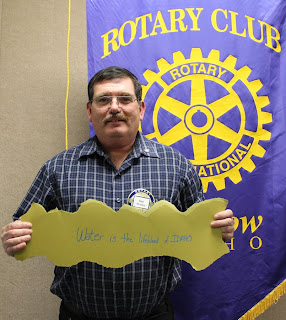H2O: 2 hydrogen atoms and 1 oxygen atom.
Some places it also has 1 million atoms of gunk.
We are lucky in America to have just plain H2O with some chlorine.
We are willing to go in it. We use it in baths, meals, sports, and swimming.
We use it without thinking. We take it for granted. We share it.
We don’t have to carry it 4 miles in 5 gallon tanks.
We are lucky. We fear it. We use it for energy.
It envelopes our lives. It gives us food.
It’s our first memory, maybe our last.
We cry it. It’s used in religion. We embrace it.
We never tire of drinking it. It is the most abundant element in the universe.
It’s in everything: people, plants, buildings.
People fight, kill, but the problem is in front of them.
We must work together, that’s the only way to preserve us and our planet.











